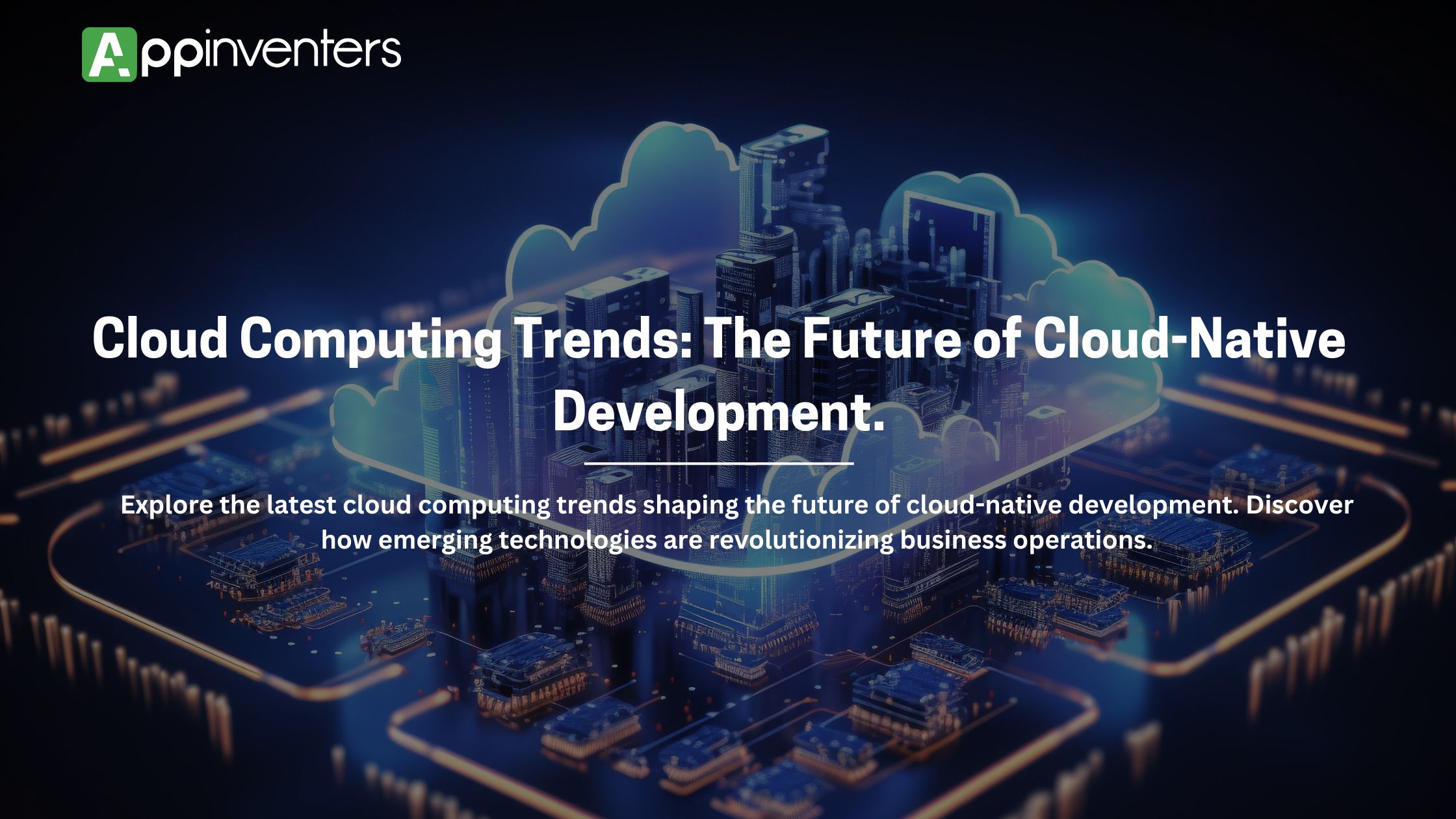Are you looking to unlock the full potential of AWS? Amazon Web Services (AWS) offers a wide range of features that can revolutionize the way you manage your cloud infrastructure. In this blog post, Appinventers will explore the top 10 game-changing features of AWS that you simply can’t ignore. From Elastic Compute Cloud (EC2) to Amazon VPC, these features are essential for any organization looking to optimize their cloud operations and drive innovation.
Elastic Compute Cloud (EC2)
Elastic Compute Cloud, commonly known as EC2, stands as one of AWS’s cornerstone services, providing resizable computing capacity in the cloud. This service enables users to launch and manage virtual servers, known as instances, with ease, facilitating a variety of computing tasks from serving web applications to running large-scale distributed systems. EC2’s prowess lies in its capability to accommodate fluctuating workloads by allowing users to scale resources up or down on demand. This scalability is not just about handling the increasing traffic during peak times but also about scaling down during quieter periods, ensuring that you only pay for the compute power you use.
The service boasts a broad selection of instance types designed to cater to different use cases, from general-purpose instances balanced between computing, memory, and networking resources, to optimized instances that cater specifically to compute, memory, or storage-intensive applications. This variety ensures that regardless of the workload, there is an EC2 instance that fits the bill.
Additionally, EC2 provides features such as Elastic IP addresses, which are static IPv4 addresses for dynamic cloud computing, and Amazon Machine Images (AMIs), which package the information necessary to boot instances with your software configurations. These features, among others, contribute to EC2’s flexibility and control, allowing for a tailored approach to cloud computing that can meet the specific needs of businesses.
With its comprehensive set of tools and capabilities, EC2 exemplifies the transformative power of cloud computing, offering businesses a robust platform for exploring new technological frontiers.
Amazon Simple Storage Service (S3)
Amazon S3 stands out as an exceptionally reliable and secure storage solution that has revolutionized the way businesses manage their digital content. This service enables the storage of vast quantities of data in the form of objects within a scalable infrastructure, making it an ideal choice for a wide range of applications, from hosting static websites to storing backups and archiving. One of the key strengths of Amazon S3 is its durability and availability, which ensures that data is protected against losses and is readily accessible whenever needed.
With its sophisticated security features, S3 provides comprehensive protections for your data, including encryption capabilities both at rest and in transit. This ensures that sensitive information is safeguarded against unauthorized access, aligning with stringent compliance requirements. Its flexible access control mechanisms allow granular management of who can view or modify the stored data, offering further layers of security.
S3’s scalability is another hallmark, allowing businesses to start small and scale up as their needs grow, without compromising performance or security. This adaptability is complemented by a pricing model that ensures cost-effectiveness, where you pay only for the storage you use. Through features like S3 Intelligent-Tiering, the service automatically moves data to the most cost-effective storage tier, optimizing costs without requiring manual intervention.
Integrating seamlessly with other AWS services, S3 enhances the capabilities of applications by providing a robust and versatile storage backbone. Whether it’s feeding data into machine learning models via Amazon SageMaker, serving website content at lightning speeds with Amazon CloudFront, or analyzing data in place with Amazon Athena, S3 serves as the foundational layer for a myriad of cloud-based applications and workflows. This synergy across services not only simplifies operations but also opens up new possibilities for innovation and efficiency in the cloud.
AWS Lambda
AWS Lambda represents a pivotal shift in cloud computing, introducing the concept of serverless architecture into the mainstream. This innovative service allows developers to focus on writing and deploying code without the burden of managing the underlying infrastructure. The essence of Lambda lies in its ability to run code in response to specific events, ranging from modifications in an S3 bucket to HTTP requests through Amazon API Gateway.
This functionality empowers users to create highly responsive applications and services by automatically executing code in reaction to various triggers. Lambda supports multiple programming languages, including Node.js, Python, Java, and Go, offering flexibility in development approaches. Additionally, Lambda seamlessly integrates with other AWS services, enhancing its capability to react to events across the AWS ecosystem.
One of the most compelling aspects of Lambda is its billing model, which charges based on the number of requests for your functions and the duration it takes for the code to execute. This model presents a cost-efficient solution by eliminating the expenses associated with idle compute resources.
The service’s scalability is another notable feature; it automatically adjusts computing allocation, depending on the incoming request rate, ensuring that the application maintains its performance as demand fluctuates. This automatic scaling eliminates the need for manual intervention, allowing teams to focus on innovation and development rather than infrastructure management. Lambda’s event-driven nature and integration with AWS services like S3, DynamoDB, and Kinesis make it an indispensable tool for building and running applications that are both efficient and scalable, further demonstrating the extensive capabilities AWS offers for modern cloud computing.
Amazon RDS
Amazon RDS stands as a beacon of efficiency and convenience in the realm of cloud-based relational database management. Offering compatibility with prevalent database engines such as MySQL, PostgreSQL, Oracle, and SQL Server, RDS provides a streamlined experience for database setup, operation, and scaling in the cloud environment. This service automates time-consuming administrative tasks, including hardware provisioning, database setup, patching, and backups, enabling businesses to allocate more time and resources to innovation and growth rather than database maintenance.
RDS enhances performance and reliability with its Multi-AZ deployments, which automatically replicate databases in different Availability Zones, thus ensuring high availability and failover support. For development teams looking to push the boundaries of efficiency, RDS also offers read replicas to increase read scaling. These replicas facilitate load balancing across the database tier, thereby boosting the application’s performance.
Security in RDS is tight, with features such as encryption at rest and in transit, using keys you manage through AWS Key Management Service (KMS). This ensures that data is encrypted when stored on the disk and also as it travels to and from the RDS instance. Additionally, the service integrates seamlessly with AWS Identity and Access Management (IAM), allowing for fine-grained control over who can access your RDS databases. Amazon RDS embodies the ease of use and flexibility necessary for modern application development, with managed service benefits that significantly reduce the overhead associated with traditional relational databases. Through RDS, AWS empowers developers and businesses to leverage the capabilities of familiar database engines in a more efficient, scalable, and secure cloud environment, without the administrative burden that typically comes with such databases.
Amazon EC2 Auto Scaling
Amazon EC2 Auto Scaling epitomizes the essence of cloud elasticity, offering a dynamic mechanism to adapt your compute capacity in accordance with real-time demands. This feature is engineered to maintain the equilibrium between efficiency and cost-effectiveness, ensuring your applications are neither under-resourced during peak loads nor over-resourced during lulls, which translates to a judicious use of your budget. By crafting detailed scaling policies, users gain the ability to define parameters that automatically increase or decrease the number of instances. This proactive scaling not only bolsters application availability but also enhances user experience by accommodating sudden traffic surges without a hitch.
Auto Scaling groups, a pivotal component of this service, streamline the process of instance management. Once set up, these groups can be configured to automatically register new instances with load balancers, ensuring even distribution of traffic among instances and thereby, steady application performance regardless of workload fluctuations. The service’s predictive scaling feature takes it a step further by employing machine learning algorithms to forecast traffic patterns and schedule scaling actions in advance, offering an unprecedented level of readiness for anticipated demand spikes. Integration with Amazon CloudWatch is another significant advantage, enabling the monitoring of various metrics and the triggering of scaling actions based on predefined thresholds or schedules. This seamless integration not only simplifies operations but also empowers you to tailor your scaling strategy to the unique needs of your application, ensuring optimal performance and user satisfaction at all times.
Amazon CloudFront
Amazon CloudFront revolutionizes the way content is delivered across the globe, ensuring that users experience reduced latency and an overall enhanced performance of websites and applications. This content delivery network (CDN) functions by distributing content from your origin server to multiple edge locations worldwide. When a user requests your content, CloudFront retrieves it from the edge location nearest to the user, significantly cutting down on delivery times and improving content access speed.
What sets CloudFront apart is its tight integration with other AWS services, including Amazon S3, Elastic Load Balancing, and AWS Lambda, allowing for dynamic content delivery and advanced security features. This integration enables CloudFront to deliver not just static files but also dynamic content that can be customized for individual users, making it a robust solution for a wide range of content delivery requirements.
Moreover, CloudFront provides a layer of protection for your applications by offering AWS Shield Standard at no extra cost, which guards against the most common network and transport layer DDoS attacks. For businesses requiring advanced security measures, CloudFront integrates effortlessly with AWS Web Application Firewall (WAF), providing granular control over the traffic reaching your applications. The scalability of CloudFront, coupled with its pay-as-you-go pricing model, ensures that businesses of all sizes can benefit from its features without committing to significant upfront costs. Whether you’re a small startup or a large enterprise, CloudFront offers the flexibility to handle traffic spikes and the global reach to serve content to customers at high speeds, wherever they are in the world.
AWS Identity and Access Management (IAM)
AWS Identity and Access Management (IAM) stands as a cornerstone in the architecture of cloud security, offering granular control over who is authenticated and authorized to use your AWS resources. With IAM, you can meticulously manage user access to your AWS services, ensuring that each user has access only to the resources that are essential for their role. This capability not only enhances the security posture of your cloud environment but also supports compliance with various regulatory standards.
IAM allows for the creation of multiple users and groups under a single AWS account, enabling you to assign unique credentials and permissions to each. This differentiation is pivotal in implementing the principle of least privilege, a best practice in security management, which states that users should have the minimum level of access—or permissions—needed to perform their duties.
Further enriching its security features, IAM seamlessly integrates with other AWS services, providing a unified approach to access management across your AWS ecosystem. For instance, when combined with Amazon RDS, IAM enhances database security by controlling who can perform administrative actions on your RDS instances. Similarly, integration with Amazon S3 allows for precise control over who can upload or access specific data stored in S3 buckets.
IAM’s support for identity federation is another powerful feature, enabling organizations to allow users to log in to AWS using their existing credentials from any federated Identity Provider (IdP), such as Microsoft Active Directory. This facilitates streamlined access management across corporate environments and cloud resources, simplifying the user experience without compromising security. In essence, IAM equips you with the tools to create a robust security framework, tailoring access controls and permissions to meet the intricate needs of your organization’s operational and security requirements.

AWS CloudFormation
AWS CloudFormation is a service provided by Amazon Web Services (AWS) that enables you to model and provision AWS infrastructure resources in a predictable and repeatable manner. It allows you to define your infrastructure as code using a template format, typically written in JSON or YAML, called CloudFormation templates.
With CloudFormation, you can define a set of AWS resources and their configurations in a declarative manner, specifying dependencies and relationships between resources. Once you have written your CloudFormation template, you can use it to create, update, or delete the defined resources as a single unit, referred to as a CloudFormation stack. CloudFormation handles the provisioning and configuration of resources in a safe and consistent manner, ensuring that all resources are created in the correct order and with the specified configurations. This makes it easier to manage and maintain your infrastructure, especially in complex environments where multiple resources need to be orchestrated together.
Key features of AWS CloudFormation include:
- Subnets: You can divide your Amazon VPC into one or more subnets, each with its own CIDR (Classless Inter-Domain Routing) block. Subnets can be public, private, or VPN-only, depending on their accessibility from the internet and connectivity options.
- Internet Gateway (IGW): An Internet Gateway enables communication between instances in your VPC and the internet. It serves as a target for internet-bound traffic and facilitates communication with external services such as AWS services, internet-facing applications, or other public resources.
- Route Tables: Route tables define the rules for routing traffic within your VPC. Each subnet is associated with a route table, which determines how traffic is directed within the VPC and to external destinations.
- Network Access Control Lists (NACLs): NACLs act as a firewall at the subnet level, controlling inbound and outbound traffic by allowing or denying specific protocols and port ranges. They provide an additional layer of security beyond security groups.
- Security Groups: Security groups act as virtual firewalls for your EC2 instances and other resources within the VPC. They control inbound and outbound traffic based on user-defined rules, allowing you to specify the protocols, ports, and IP ranges that are allowed to communicate with your instances.
- Virtual Private Network (VPN) Connections: Amazon VPC supports VPN connections, allowing you to establish encrypted connections between your VPC and your on-premises network or other VPCs, extending your network securely to the cloud.
- VPC Peering: VPC peering enables you to connect two VPCs privately, allowing instances in one VPC to communicate with instances in another VPC using private IP addresses as if they were on the same network.
- Elastic IP Addresses: Elastic IP addresses (EIPs) are static IP addresses that can be associated with instances in your VPC, providing persistent public IP addresses that can be remapped to different instances as needed.
Amazon VPC offers a flexible and scalable networking solution, allowing you to create complex network architectures and securely connect your AWS resources to each other and to your on-premises infrastructure. It is a foundational component for building secure and scalable applications in the AWS Cloud.
Conclusion
In conclusion, AWS offers a comprehensive suite of services that empower businesses to build, deploy, and scale applications in the cloud efficiently. From flexible computing with EC2 to secure storage via S3, and from serverless computing with Lambda to managed databases through RDS, AWS caters to diverse business needs. With features like auto-scaling, seamless integration between services, robust security measures, simplified infrastructure management with CloudFormation, and streamlined application deployment with Elastic Beanstalk, AWS enables businesses to focus on innovation and growth. In essence, AWS remains at the forefront of cloud computing, providing the tools necessary for businesses to thrive in today’s rapidly evolving digital landscape.













